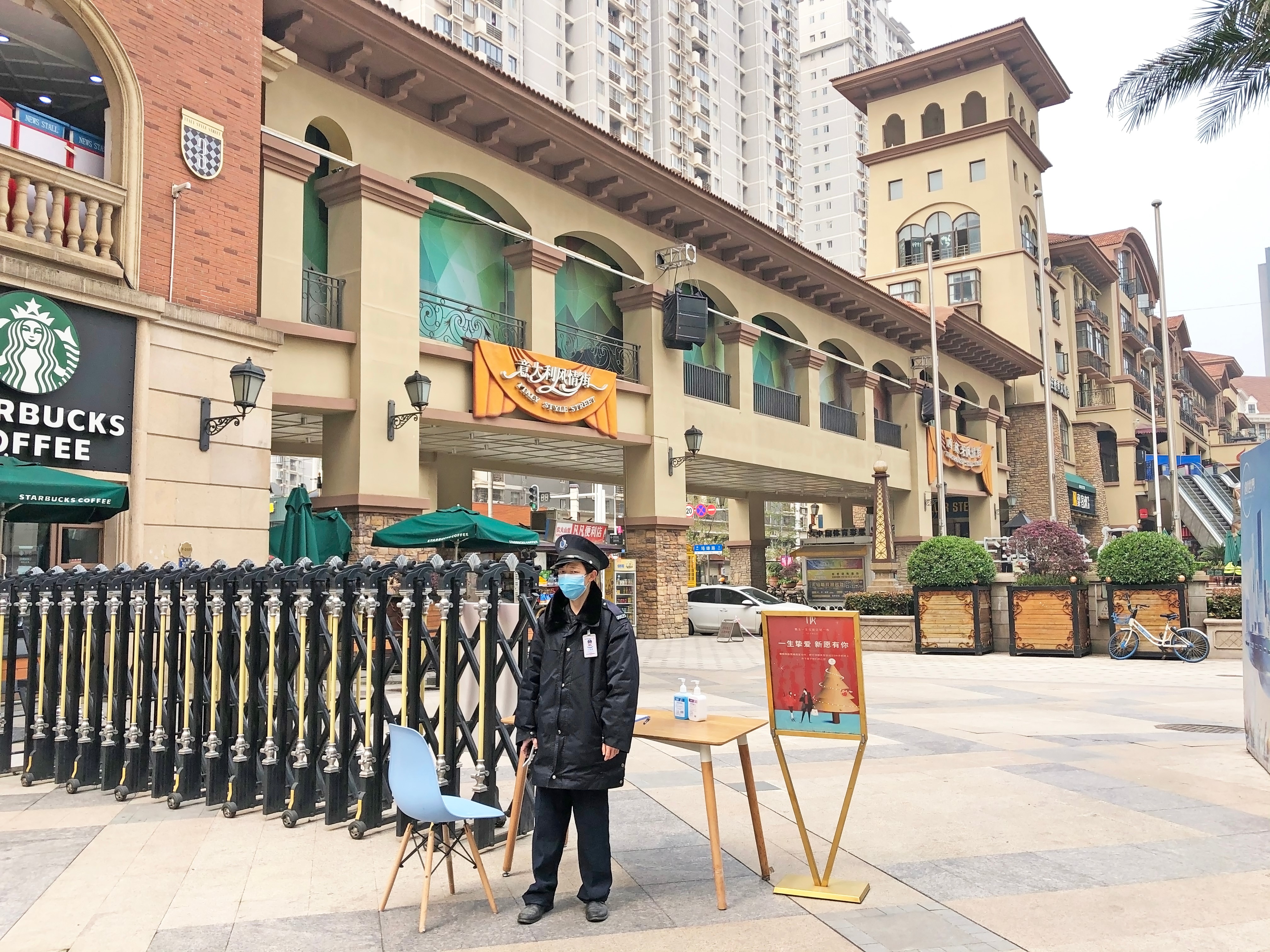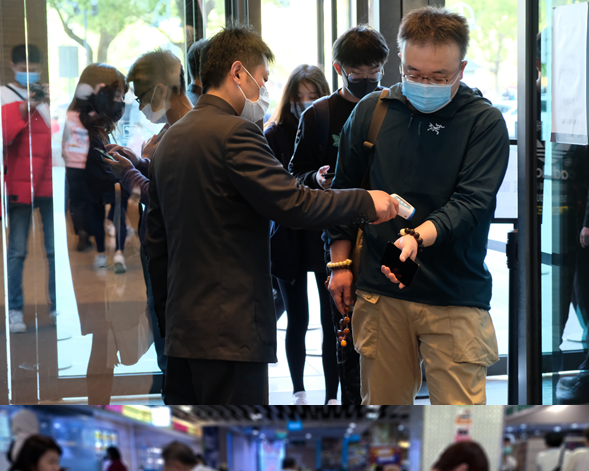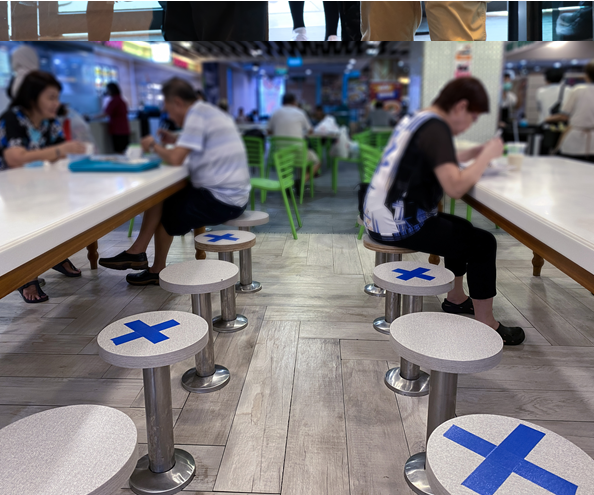Exclusive Interview: Kevin Peng, Secretary General of China's Retail/Restaurant Association

We hosted a discussion with Kevin Peng, who is Secretary General of China's Chain Store and Franchise Association (CCFA), the official representative of the retailing and franchise industry in China. Currently, there are more than 1000 enterprise members with over 388,000 outlets, including domestic and foreign-invested retailers, franchisers, suppliers and relevant organizations.
Dan Hodges: "What are the best practices for retailers to deal with COVID-19."
Kevin Peng: "For retail industry, different retail formats have different coping strategies. It also differs in different periods of time.”
“The situation that the United States is experiencing is similar to China in late January and early February. At that time, the isolation measures issued by the government were also strict and I will focus on the response of that period.”
“Grocery Stores perform quite well since the restaurants were closed and people eat at home. For instance, Hypermarket sales increased by 3-5%, community supermarkets increased by 30% -150%, and e-commerce fresh-food platforms tripled in sales.”
“For groceries, the following four aspects of work can be concerned:
First, the employee protection and labor shortage. The first thing for retailers is to protect their employees as much as possible, because once employees in store were infected by coronavirus, or infected customers were traced back to visiting the store, the store will be required to close by the government, which will have a great impact on retailers. Therefore, it is very important to protect employees and check the temperature of customers at the beginning.”
“As to the shortages of labor, as restaurants closed while retail stores lack of labor, the cooperation on employee sharing was taken, some catering companies sent their employees to work in retail companies.”

“The second problem is the hindered supply chain and logistics. Due to the isolation policies and lockdown, retailers need to apply green passes with local governments to ensure the smooth flow of goods.”
“The third one is to deal with the customer's panic buying; the store must prepare the large amount of goods. At the beginning, the consumer snapped up frozen foods, rice, vegetables, grains and oils, and then cooking products, such as condiments and dressing.”
“Last but not the least, is to innovate business according to the changes of consumer needs. Due to the” Stay at home” policies, more consumers tend to use home-deliveries, some large retailers have set up a lot of pickup spots around residential areas.”
“As a retail trade association, we collect information from members, communicate with government, and coordinate policies to solve the problem of lack of masks for retailers. We will also survey the losses suffered by retailers and help them get loan and tax relief policies.”

Hodges: “Are people shopping in stores, department store and shopping mall? Are people dining in restaurants?”
Peng: “On this issue, it is also divided into two stages:
In the first stage, before March 15, everyone will go to hypermarkets and community supermarkets to shop, but most department stores or shopping centers are required to close. Even when the department stores and shopping centers opened, there is no traffic.”
“The sales fell dramatically, most companies sold less than 10% of the past.”
“Before March, for some department stores, shopping malls and specialty stores with strong digital capabilities, achieved some sales by online channels.”
“In the second stage, after March 15, the epidemic in China has gradually eased, most of the previously closed stores have been reopened.”
“According to our statistics, the opening rate of China's supermarket industry has reached 95%, and the number of department stores and shopping centers has recovered to 85%. Although enterprises have begun to fully resume business, it takes time for consumer confidence to recover, and the traffic and sales of department stores and shopping centers have only recovered to 30-40% of normal, and the challenges are still great.”
“On the catering industry, In the first stage, before March 15, the restaurants were closed. Only a few restaurants provide home delivery services through the online platform. After March 15, the restaurants have been reopened, but most consumers didn’t come back. On the one hand, the government requires that no more than 3 people sit at one table. On the other hand, for safety considerations, the consumers’ consumption reduced a lot. Restaurants are starting to sell “ready to eat” products, but sales are only 10% -40% of what they used to be.”
Hodges: “How did the pandemic affect China’s retail market, online and brick and mortar?”
Peng: “Affected by the epidemic, from January to February 2020, China’s total retail sales of consumer goods fell by 20.5%.”
“Most supermarkets and hypermarkets have performed well; hypermarkets have achieved 3-5% growth. The sale of supermarkets’ fresh food groceries in smaller areas increased by 50%-150%, and the sales of fresh food online platforms tripled.”
“Online platforms such as Hippo fresh, Dmall, JD deliver to home, experienced a surge in orders, in the early stage of the epidemic, they were unable to fulfill the orders.”
“Brick and mortar grocery stores’ home delivery business growth is also very fast; in February, their home delivery business generally increased 80%-200%, whether big stores or small stores. They have become a large or small pre-position warehouse.”
“And as I just mentioned, department stores and shopping centers, specialty stores, sales are freezing.”
“These industries are relatively less digitalized, and when offline stores close, they have almost no sales. Among these enterprises with better digital capabilities some sales have been restored through online platforms, such as Rainbow Department Store in south China, which has achieved 10% of the past sales through online platforms when all offline stores have been closed. For department stores, the online sales were insignificant in the past, things are changing now.”
“Another piece of good news is that, forced by the pandemic, these enterprises are now willing to spend a lot of resources to implement digital transformation. In the past, when these enterprises implemented digital transformation, they always encountered a lot of internal resistance, and now this resistance has slowly disappeared.”
“Because consumers mainly buy food, the overall online performance is not bright as before, in the first two months of 2020, online retail sales grew by only 3% year-to-year, compared with 19.5% in the same period last year.”
Hodges: “How did Chinese consumers change their behavior under quarantine? Will these changes endure?”
Peng: “Yes, there are some changes in consumers. First of all, in the past, consumers mainly purchased clothing, electrical appliances and other non-food goods through online channels, but now more fresh foods are purchased, and more offline retail enterprises are needed to provide home delivery services.”
“Secondly, because almost everyone in China uses the Wechat App, there is a very special buying channel on Wechat, which is group buying; consumers buy a large number of fresh food and ready to eat products from restaurants through group buying.”
“Third, because of the continuing impact of the pandemic, consumers' expectations of future income have declined, so unnecessary expenditure has been reduced. In addition, because many people work at home, the consumer demand for clothing has decreased a lot. In addition, as the epidemic has lasted for more than two months, consumer psychology and consumer behavior are also changing. In terms of food, consumer demand for taste will give way to health. Demand for material will give way to creating a more comfortable home environment, so consumers will buy more household goods and fitness related goods.”
“I think this change will last for a long time. Now we have begun to work in the office and the restaurant has reopened, but consumption has not recovered, as expected.”
Hodges: “Are people wearing protective masks and gloves. How are consumers shopping differently?”
Peng: “Yes, almost everyone wears a mask.”
“Now there are also some changes to supermarket shopping behaviors. If you go to the supermarket, you will prefer the time when there are fewer people, and if there are too many people in the supermarket, the store will also limit the flow.”
“Another change is delivery to home services, as I just mentioned, almost all supermarket delivery to home business or online business is growing.”
“Generally speaking, although the pandemic in China has been controlled, consumers are still reluctant to stay in offline stores for a long time, so for department stores, shopping malls and other time-killing formats, traffic is much less than before.”
“During this period, because many people buy things through Wechat group buying, most of them pursue more cost-effective options for non-food items.”
“In addition, one change is that although many restaurants have reopened, because consumers are less willing to visit restaurants, many restaurants have begun to sell ready to eat products, but overall sales are far from recovering.”
Hodges: “What can we learn from new strategies tested in China by brands and retailers such as Nike during COVID-19?”
Peng: “We surveyed some brands members, in general, their sales during the pandemic fell sharply. Although the brands have begun to fully resume work, consumption is far from recovery, which is similar to the situation in the department store industry.”
“I know there are some brands, because the previous digital capability is relatively strong, through the use of digital tools, they could reach consumers without stores. Their sales are not bad. So, if brands had digital capabilities before, sales will be less affected, because they can maintain contact with customers. But enterprises with weak digital capabilities before, the impact will be great.”
Click the social buttons to share this story with colleagues and friends.
The opinions expressed here are the author's views and do not necessarily represent the views of MediaVillage.com/MyersBizNet.


